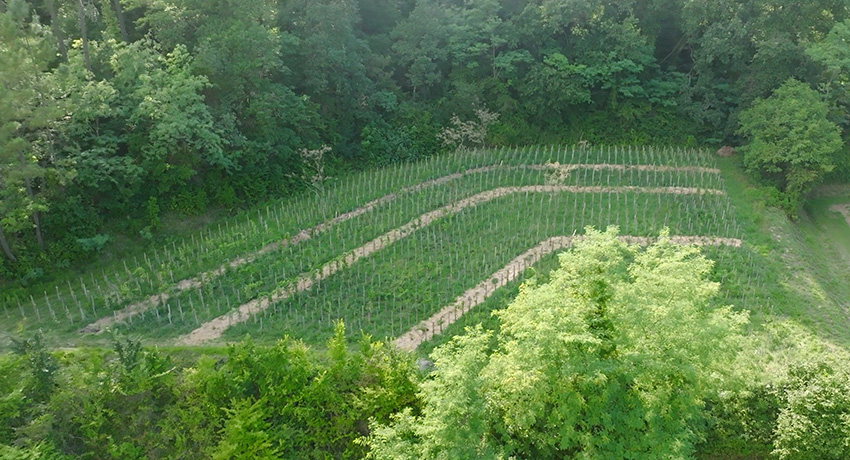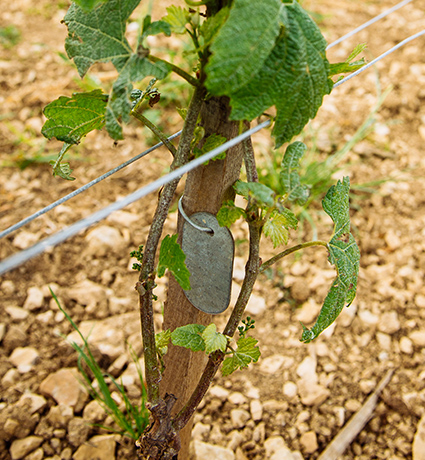Our wineyards
The philosophy behind our approach to wine? Respect the environment in our vineyards and in our work with partners. We have adopted practices based on strong commitments: to maintain vineyard soil fertility, protect our vineyards for tomorrow and seek support in biodiversity.
Maintaining the fertility of vineyard soils
A complete ecosystem unto itself, wine growing soil is complex and particularly sensitive to any type of disturbance. It can only be preserved by calibrating its organic content with a new understanding of vine nutrition. At AdVini, fertilization is no longer aimed at feeding the plant, but the soil, so it can naturally deliver everything the plant needs. This approach has driven our transition to organic fertilization on our plots.
Soil fertility is also maintained with cover cropping. Plants and grasses planted between and under rows of vines are home to a rich and helpful fauna for the winemaker. In addition to being a habitat for biodiversity, cover crops improve the water-holding capacity of soils and limit erosion from water runoff and wind, thus maintaining a fertile layer of soil on the plots.
By considering the vine in its ecosystem, and to ensure that vineyard soil can do its job properly, the choice of a more sustainable approach is obvious.

Sustainable protection of the vineyard
Because there is no single solution, we explore every possible method, including the use of more efficient and perfectly adjusted equipment, along with alternatives such as biocontrol products. Testing is crucial to find the right combination of complementary practices and multiply initiatives in support of our best ally in the vineyard: biodiversity.
Building on biodiversity
To help preserve it, wine growing practices must be updated to include principles of agroecology. Vines flourish in a complex ecosystem where every living thing plays a role as important as soil.
Hedges, low walls and isolated trees provide habitat and food for countless species. Known as ‘beneficials’, this trove of insects, micro-organisms, birds and bats help the winegrower by protecting the vines. Even better, these natural elements help structure the landscape and regulate the microclimate. The same can be said of cover cropping. A winemaker’s savoir-faire resides in finding a subtle balance that fosters positive effects and synergies without creating competition.
We go the extra mile to provide an additional nudge to certain species via a partnership with stakeholders in biodiversity preservation to create the most suitable habitats for each species. Birds and bats are given the best-suited nesting boxes and can fully concentrate on their development.
Choosing the right species, rootstocks and grape varieties is also crucial. Centuries of careful selection of the best, most suitable varieties on each terroir are now facing climate change.
To safeguard the heritage bequeathed to us and hand it down to future generations, we practice massal selection in Chablis, on the best Chardonnays from our best terroirs.

